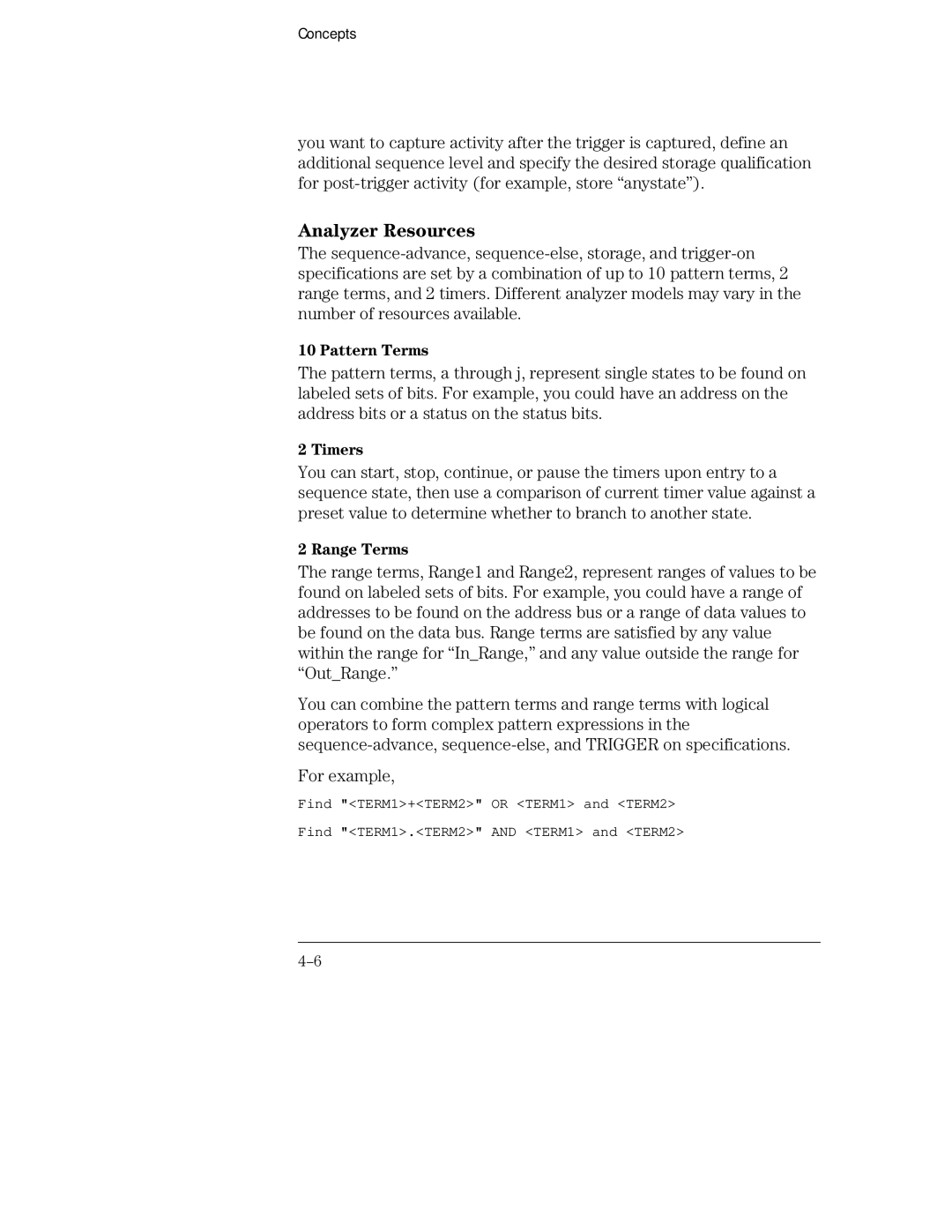Concepts
you want to capture activity after the trigger is captured, define an additional sequence level and specify the desired storage qualification for
Analyzer Resources
The
10 Pattern Terms
The pattern terms, a through j, represent single states to be found on labeled sets of bits. For example, you could have an address on the address bits or a status on the status bits.
2 Timers
You can start, stop, continue, or pause the timers upon entry to a sequence state, then use a comparison of current timer value against a preset value to determine whether to branch to another state.
2 Range Terms
The range terms, Range1 and Range2, represent ranges of values to be found on labeled sets of bits. For example, you could have a range of addresses to be found on the address bus or a range of data values to be found on the data bus. Range terms are satisfied by any value within the range for “In_Range,” and any value outside the range for “Out_Range.”
You can combine the pattern terms and range terms with logical operators to form complex pattern expressions in the
For example,
Find "<TERM1>+<TERM2>" OR <TERM1> and <TERM2>
Find "<TERM1>.<TERM2>" AND <TERM1> and <TERM2>
